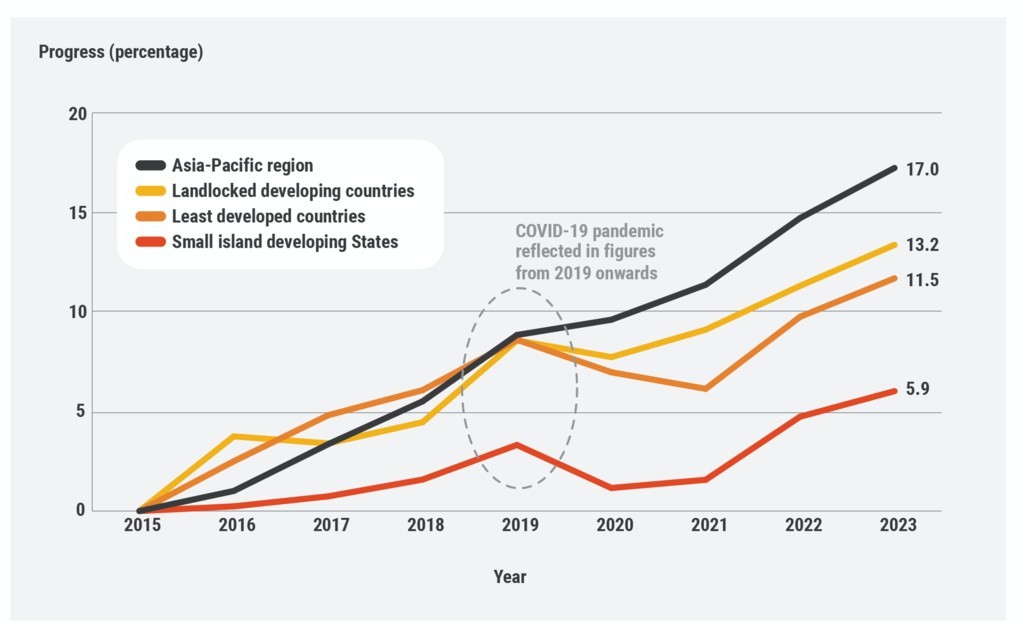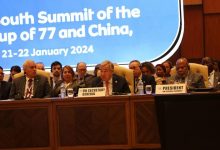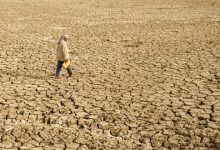Is Asia-Pacific Veering Off Course from SDG Goals? Shocking UN Data Exposes
Adopted by world leaders in 2015, the 17 Goals focus on ending extreme poverty and hunger, ensuring access to clean water and sanitation, and providing quality universal education, among other targets, by 2030.
The 2024 SDG Progress Report, launched by the UN Economic and Social Commission for Asia and the Pacific (ESCAP), highlighted persisting challenges of poverty and inequality, with gender and location playing pivotal roles.
“Our unwavering commitment is vital, as progress towards the SDGs remains uneven and inadequate across the region,” Armida Salsiah Alisjahbana, Executive Secretary of ESCAP, wrote in the report’s foreword.
“While additional efforts are required across the board, granular data emphasizes the urgency of addressing inequalities that impact marginalized groups, including women, girls, rural populations and the urban poor, who continue to find themselves locked out of education and employment opportunities,” she added.
The annual SDG Progress Report provides an overview of progress on the global goals in the Asia Pacific region, serving as a foundation for activities and policy responses by ESCAP and its partners.
Country divide

ESCAP report
Progress over time by LDCs, LLDCs and SIDS
The painted a worrying picture for Asian and Pacific countries in “special situations” – its Least Developed Countries (LDCs), Landlocked Developing Countries (LLDCs) and small island developing States (SIDS).
The SIDS were the ones most in need of support given their unique vulnerabilities, ranging from geographical isolation to limited resources and climate change impacts.
The COVID-19 pandemic all but erased progress these nations made towards the SDGs since 2015, leaving their achievement at a mere 5.9 per cent, according to the report.
The LDCs and LLDCs fared marginally better than the islands, registering only 11.5 per cent and 13 per cent progress, respectively, but still falling significantly short of what is needed to achieve the Goals by 2030.
Gender divide
The report also highlighted the different societal challenges faced by men and women, especially along so-called “gendered” roles.
Women’s challenges primarily related to education and employment. They had lower enrollment rates and struggled on literacy targets. Young women also encountered difficulties accessing labour markets, leading to higher rates of youth unemployment.
Men’s were more associated with health and personal safety, including new HIV infections, mortality rates attributed to diseases, suicide rates, alcohol consumption, road traffic deaths and mortality attributed to poisoning and the prevalence of tobacco use.
Urban-rural divide
People living in rural areas faced pronounced disadvantages, the report noted, such as limited access to basic drinking water and sanitation facilities.
In addition, insufficient clean cooking fuels in these areas contributed to serious respiratory diseases, especially among women and girls who spent longer hours in the kitchen.
In general, urban areas exhibited better conditions, yet paradoxically, within these areas, the poorest boys and girls faced significant hurdles in completing upper secondary education.

© UNICEF/Saiyna Bashir
Asia-Pacific is home to several of the countries worst affected by climate change impact. Pictured here, the 2022 floods in Pakistan.
Urgency of climate action
Among the 17 SDGs, Goal 13 on climate action required most attention, as progress on all of its targets are off track and some are in reverse, according to the report.
This underscored the need to integrate climate action into national policies, strengthen resilience and improve adaptive capacity to cope with climate-related disasters, it noted.
The report also called for significant ramp-up in investment towards sustainable infrastructure and renewable energy sources.
Elliot is an award-winning journalist passionate about international affairs and humanitarian causes. Elliot has covered stories from conflict zones and areas devastated by disasters, highlighting critical global issues.




Do you think the delay in achieving the SDGs in the Asia-Pacific region could have been prevented with better strategic planning and coordination?
Definitely, Emily_Ponderer. Strategic planning and coordination are essential to overcoming the challenges in achieving the SDGs in the Asia-Pacific region. With a cohesive approach and efficient resource allocation, progress towards the goals can be accelerated, benefiting the entire region.
It is disheartening to see that Asia-Pacific is not on track to achieve the SDGs by 2030. The persistent challenges of poverty and inequality, particularly affecting marginalized groups, require urgent attention and concerted efforts from all stakeholders.
It is concerning to see that progress towards the SDGs in Asia-Pacific is not meeting the targets set for 2030. It is imperative that we address the persistent challenges of poverty and inequality, especially for marginalized groups like women, girls, and rural populations. More focused efforts are needed to ensure everyone has access to education and employment opportunities.
It’s concerning to see the latest UN data revealing the challenges Asia-Pacific countries face in achieving the SDGs by 2030. More concrete actions are crucial to address the inequalities impacting marginalized groups and ensure no one is left behind.
Is the ESCAP report indicating that the Asia-Pacific region is failing to make significant progress towards the SDG goals, especially for marginalized groups?
Based on the data presented in the ESCAP report, it indeed raises concerns about the slow progress in the Asia-Pacific region towards the SDGs, particularly for vulnerable groups. The need for targeted actions and inclusive policies is evident to address the persistent inequalities affecting women, rural populations, and the urban poor.
It’s disheartening to see the Asia-Pacific region veering off course from the SDG goals. The UN data sheds light on the persistent challenges of poverty and inequality, particularly affecting marginalized groups. More focused efforts are needed to address these pressing issues and ensure no one is left behind.
As an advocate for gender equality and social justice, I believe it is crucial for all countries in the Asia-Pacific region to step up their efforts to achieve the Sustainable Development Goals. The UN report’s findings are alarming, highlighting the urgent need for targeted interventions to address inequalities that disproportionately affect marginalized groups.
As a resident of the Asia-Pacific region, I am deeply concerned by the revelations presented in the UN ESCAP report. It is disheartening to see the persistent challenges of poverty, inequality, and lack of access to education and employment opportunities for marginalized groups. Urgent action is needed to address these issues and ensure progress towards the SDGs is inclusive and equitable for all individuals in the region.
Are there any specific initiatives mentioned in the 2024 SDG Progress Report to address the challenges faced by marginalized groups in the Asia-Pacific region?